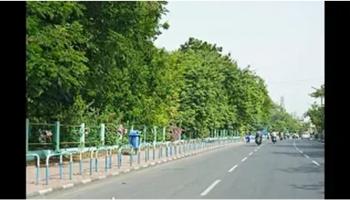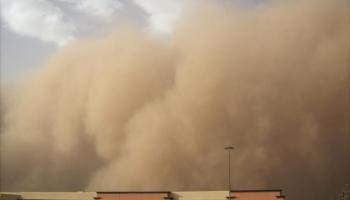Water Management
Reorienting watershed development programme in India – an occasional paper
Posted on 12 May, 2009 01:17 PMThis report by FoRWARD deals with the reorientation of the watershed development programme in India. The government is apparently committing larger resources for watershed development and plans to bring most of the dryland, degraded lands under the coverage of the programme over the next 25 years or so.
Watershed development review: issues and prospects - a technical report by Centre for Interdisciplinary Studies in Environment and Development (CISED)
Posted on 12 May, 2009 01:02 PMThe normative framework underlying the review “Understanding watershed development” requires a “normative framework” embracing the notions of “watershed” and “watershed development’, and how they are translated into practice. Such translation may also be based upon additional assumption about what is possible and desirable, and how to bring these changes about.
Understanding processes of watershed development program in India: report of a study anchored by WASSAN and facilitated by ICEF
Posted on 12 May, 2009 12:48 PMThis process study conducted by WASSAN with the support of ICEF is an attempt to bring focus on the processes of the watershed development projects. It is an attempt to provide feedback to the policy makers, donors and field level facilitators on the processes at the field level. It is an attempt to assess, diagnose and compare process at field level in different projects.
Watershed development programmes in Madhya Pradesh: present scenario and issues for convergence
Posted on 12 May, 2009 12:40 PMThis report by Forum for Watershed Research and Policy Dialogue (FoRWARD) attempts to look at the present status of watershed development in the State of Madhya Pradesh so as to be able move towards a vision of better convergence across developmental objectives (including equity), synergy between natural resource regeneration, administrative co- ordination, institutional coherence, and resource mobilization. It is in this larger context, the review focuses is on (a) spatial spread, prioritization, and complementarity across projects; (b) comparison across modes/ approaches and cross learning; and, (c) issues for future policies.
Watershed development in Maharashtra: present scenario and issues for restructuring the programme
Posted on 12 May, 2009 12:31 PMThe report on “Watershed Development in Maharashtra” by Society for Promoting Participative Ecosystem Management (SOPPECOM) ), on behalf of the Forum for Watershed Research and Policy Dialogue (ForWaRD), deals with the present scenario and issues for restructuring the programme. The concept of integrated and participatory watershed development and management has emerged as the cornerstone of rural development in the dry and semi-arid regions of India. Over the years the country has been making increasing investments in this area with the objective of enhancing the production potential of rainfed agriculture.
Identification of suitable sites for water harvesting structures in Upper Betwa watershed through WARIS
Posted on 12 May, 2009 12:18 PMThis article by Rajashree V Bothale deals with the identification of suitable sites for water harvesting structures in Upper Betwa watershed through WARIS. The present study uses decision support system WARIS for identification of suitable sites for water harvesting structures.
AVSWAT- a spatial decision support system for land and water management and its application for watershed management in Bankura district of West Bengal
Posted on 12 May, 2009 12:09 PMThe article deals with AVSWAT- A spatial decision support system for land and water management and its application for watershed management in Bankura district of West Bengal. Decision Support Systems (DSS) are defined as computer-based information systems designed to support decision makers interactively in thinking and making decisions about relatively unstructured problems. Spatial Decision Support Systems (SDSS), which are the integration of DSS and GIS was initiated by Densham and Goodchild ( 1988) are emerging as efficient tools for managing natural resources like land and water.
Cadastral level resources information system for Kundapallam (Kd1) and Neeralipallam (kb3) watersheds in the Nilgiris district, Tamil Nadu, using remote sensing, GPS and GIS
Posted on 12 May, 2009 12:03 PMThis article deals with cadastral level resources information system for Kundapallam (Kd1) and Neeralipallam (kb3) watersheds in the Nilgiris district using remote sensing, GPS and GIS. The main objectives of the study are as follows -
- Creation of cadastral level resources information system for sustainable watershed development
- To identify the improper land-use practice areas with the combination of slope and soil type
- To evolve and arrive at local-specific cadastral boundary level development action paln considering land and forest resources for optimal utilization and to address the remedial developmental measures for Kundapallam (kd1) and Neeralipallam (kb3) microwatersheds on a sustainable basis.
Erosion response model for watershed prioritisation in Bajaj sagar sub catchment, Mahi basin
Posted on 12 May, 2009 11:55 AMThis case study presents a erosion response model for watershed prioritisation in Bajaj sagar sub catchment of Mahi basin. The natural hydrologic processes like erosion of soil, movement of soil and its deposition in various parts of reservoir are very crucial phenomena occurring in any watershed. Erosion of soil is a very complex process which is affected by many factors and the loss caused is irreversible.
A presentation on operation and maintenance of water supply systems
Posted on 12 May, 2009 11:19 AMThe presentation by M N Thippeswamy (Retd. Chief Engineer of BWSSB) deals with the operation and maintanance of water supply systems. The structure of the presentation is as follows -
- Key issues regarding water supply scenario around the World
- Definition of Operation and Maintenance
- Key issues before the water authorities for water supply O & M
- Objectives of Operational System and Management
- O & M of Water Resources for quality and quantity
- O & M of Conveyance system of water resources
- O & M of Water Treatment Plant
- O & M of service reservoirs and distribution pipeline
- O & M of drinking water quality maintaining and surveillance
- O & M of billing and collection
- O & M of Energy Audit
- Water Audit and Leakage Control
- System Management
- Public Private Partnership (PPP / PSP)







